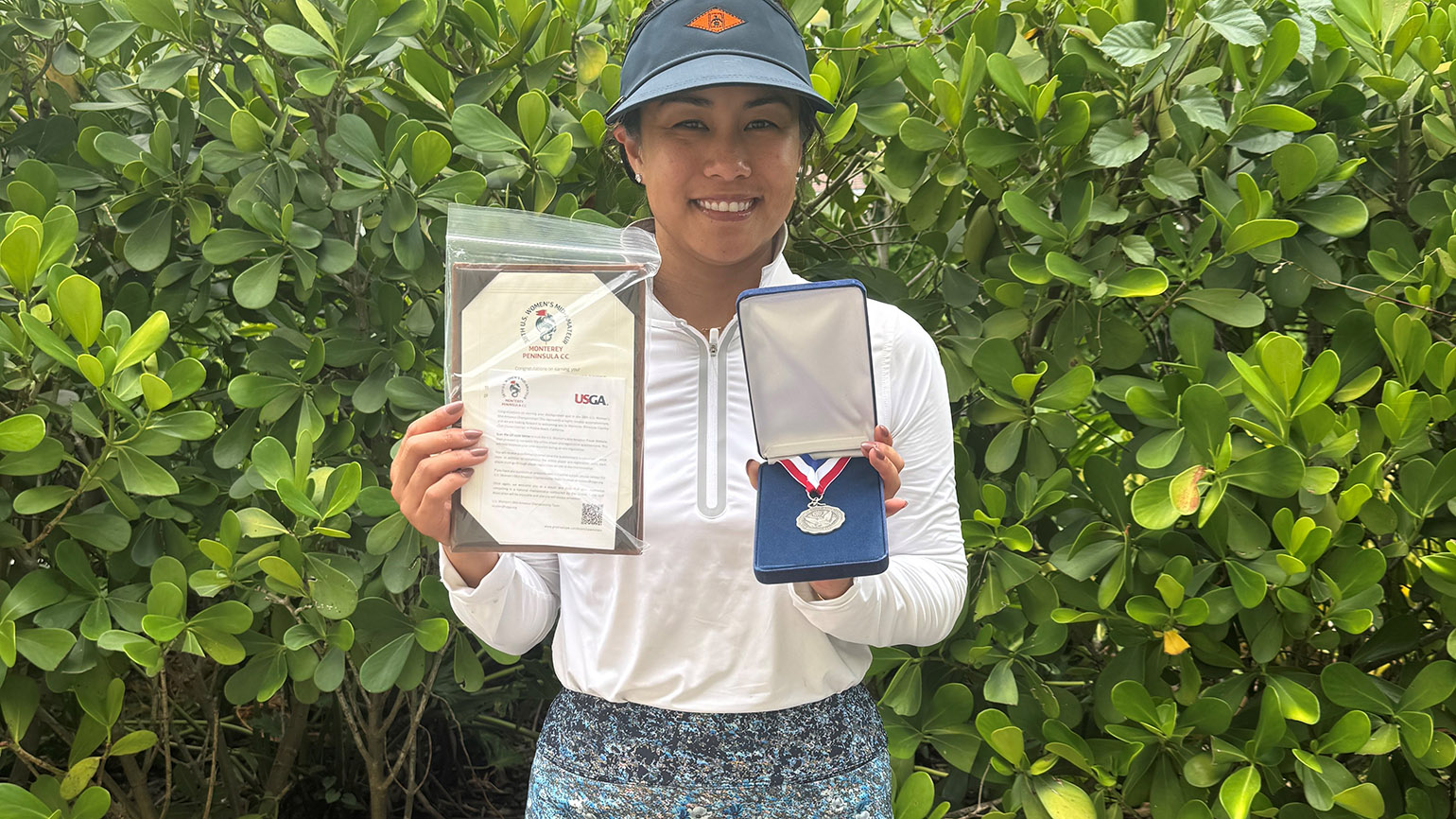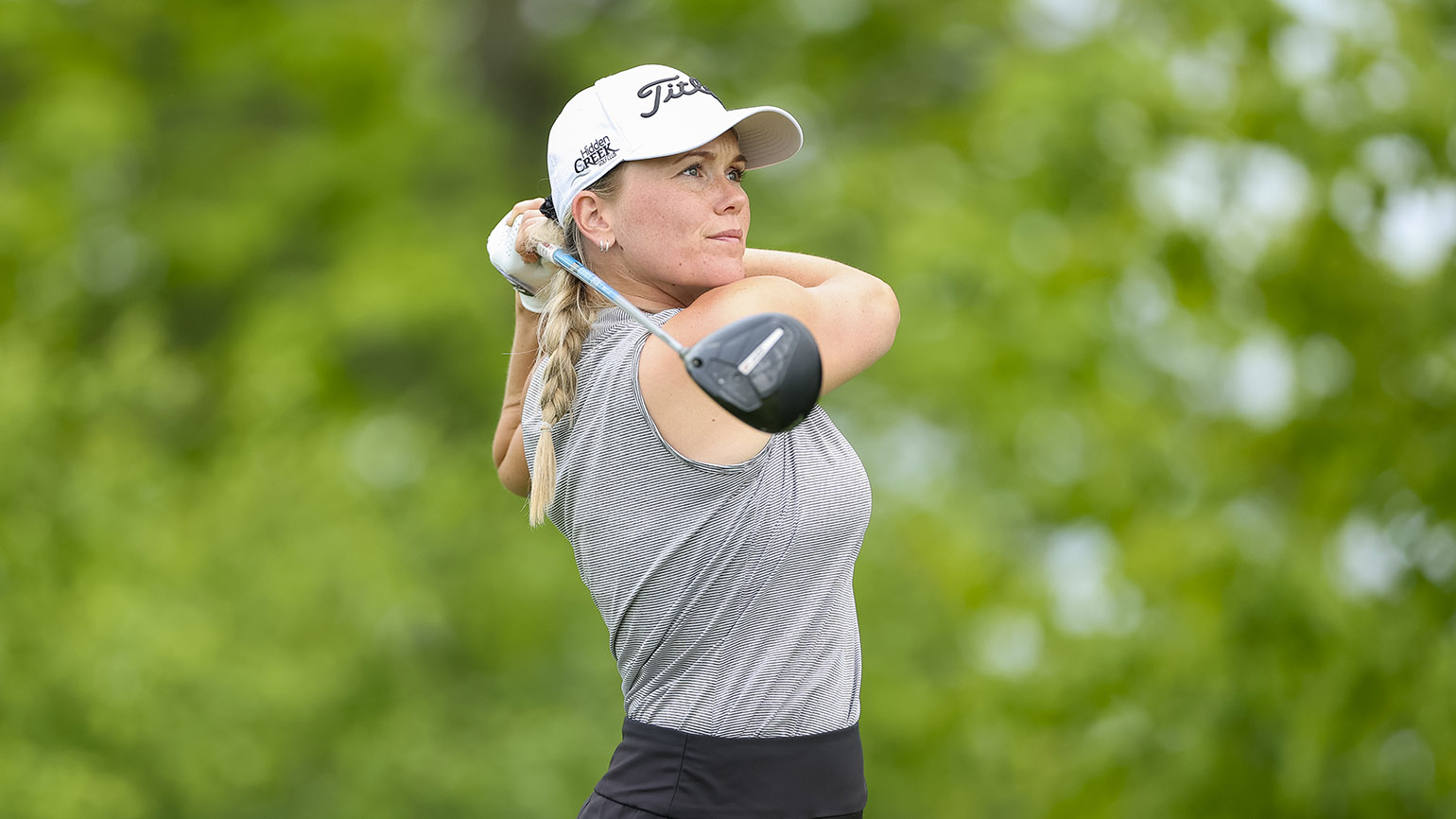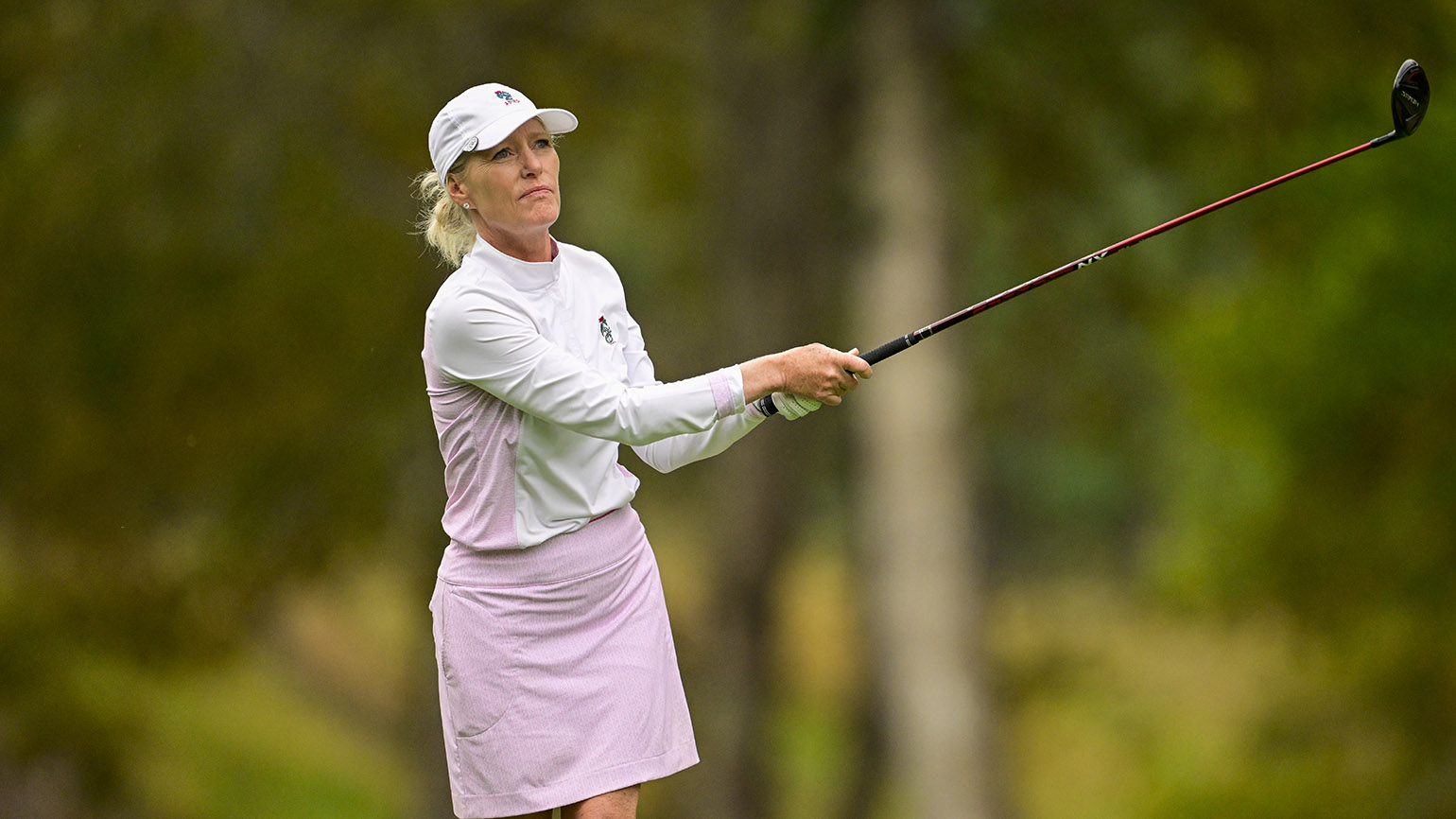From Concussions to Competition: Brooke Seay is Back
Brooke Seay is one of golf’s most unique stories.
Besides imminently making her U.S. Women’s Mid-Amateur debut at 25, Seay’s recovery and return to competitive golf after two concussions is what sets her apart from the other 131 competitors at Monterey Peninsula Country Club, in Pebble Beach, Calif., site of this year’s championship.
The Stanford graduate student is no stranger to dealing with adversity both on and off the course, as noted by her grandmother.
“My grandma always comments on this when she watches me play [via] live scoring,” said Seay. “She always expects me to make a comeback if I start off badly, and whenever I play better, she'll just be like, ‘I knew this, I knew you were going to come back.’”
And come back she has.
In January 2022, Seay was returning her dishes after she finished eating in a Stanford dining hall. While doing so, she accidentally hit her forehead on the metal frame around the dishwashing window. At the time, she laughed it off and didn’t think much of it, but the collision was more damaging than she originally thought. In the coming days, Seay visited her trainer after she began feeling nauseous and dizzy. The San Diego, Calif., native was put in concussion protocol and was told the recovery could take as much as two weeks.
“I've had to try and learn how to play with an imperfect game or not feel a hundred percent a lot the last few years,” Seay said. “I told myself, ‘Okay, I don't have everything and I'm not a hundred percent, but I'm going to figure out how I can make the most of it and I'm going to really try to compete.’”
Seay returned to golf a month later at The Chevron Championship, a women’s professional major for which she earned a sponsor’s exemption. She did well, making the cut and earning low-amateur honors (T-65). Seay’s strong form continued deep into the spring as she was a major part of Stanford’s 2022 NCAA title run. She was one of two Stanford players (along with Aline Krauter) to go a perfect 3-0-0 during the match-play portion of the NCAA Championship.
Just before the championship, Seay was the recipient of the Elite 90 Award, an NCAA accolade given to the student-athlete with the highest cumulative grade-point average participating at the finals site for each of the NCAA's championships, achieving a perfect 4.0 GPA in human biology.
After being commended for her achievement on Golf Channel’s broadcast, Seay aced a 127-yard, par 3 on live TV. “That’s not fair. Your perfect 4.0 grades and you’re making an ace in the final round of stroke play on TV,” the broadcast said. “She’s smarter than all of us, that’s for sure.”
Then, almost exactly a year after her first concussion, disaster struck again.
While watching a Stanford men’s volleyball game, Seay was hit in the head with a ball. Only one thought crossed her mind: No way, not again. Shortly after, she felt the all-too-familiar concussion symptoms, and was shut down from playing Stanford golf for the 2023 season.
Unfortunately for Seay, it didn’t stop there.
After being cleared to play again the following spring, Seay competed in the 2023 Augusta National Women’s Amateur. While she remembered playing well during the event, she immediately felt nauseous the week after.
“The doctors told me to take another two months off and that was the only time I got to play on my college team post-injury,” said Seay. “The whole next year I thought I was going to be able to recover and have a full year of competition, but I didn't get to play at all.”
Dejected, Seay found herself at a familiar crossroads: recover again or walk away from the game she loved. After discussing options with her family, Seay realized she wasn’t finished. “I didn't want to end my college career that way, I wanted to play again,” she said.
“The more I was trying to practice and play again and feel frustrated, I just kept coming back to, ‘I just can't stop yet.’”
Seay recently returned to USGA championship play in this year’s U.S. Women’s Amateur at Bandon Dunes Golf Resort in Oregon after automatically qualifying for the championship by winning the Arizona Women’s Amateur a few weeks earlier. Seay showed off her talent by advancing to match play before losing in the Round of 64 to Julia Misemer.
Despite the early exit, Seay was left with a positive taste. Having qualified for the U.S. Women’s Mid-Amateur in her first year of eligibility, she is looking forward to competing against post-college golfers like herself.
“I've been so immersed in the college scene of golf and people who are at the height of their game and trying to turn pro is their number one priority,” Seay said. “I think it'll be really fun to play with people who just love golf.”
With a mix of timing and self-proclaimed stubbornness, Seay’s career path has brought her to a rare intersection: she’s both eligible for the Women’s Mid-Amateur and still young enough to chase a possible career in professional golf.
Most recent college graduates who have enjoyed amateur success don’t register for the Women’s Mid-Am because they’ve already made the decision to try professional golf. Seay’s stop-and-start journey from multiple concussions provided a one-time window into a part of amateur golf that usually belongs to those already settled into post-collegiate careers that don’t involve playing for pay.
“I just feel lucky that the timing worked out for me that way,” said Seay, a quarterfinalist in the 2019 U.S. Girls’ Junior. “And that I get to experience another USGA championship before moving on to the next stage of my golf career.”
After the Women’s Mid-Amateur, Seay will prepare for Stage I of LPGA Q-School in hopes of playing against the world’s top players. If her concussions were to have a positive effect, they showed Seay just how much she wants to play golf.
“I think that my injury has made me much more interested in that,” said Seay. “It's just needing the feeling to play competitively again.”
Seay is currently completing her Master’s in Epidemiology and Clinical Research, with curriculum heavily integrated with data, health literature and policies, and health problem risk factors. Along with the course work, she is currently crafting her thesis on pollution and birth defects in California’s Central Valley.
Seay hopes that her story can send young athletes, especially those who may struggle with injuries or other setbacks, a lesson: “When you're recovering, you have to give yourself time. It's not productive to just be hard on yourself and I think it actually makes it worse.”
While the Women’s Mid-Amateur might be her last amateur event, Seay is trying to savor every moment of the journey. It’s a reminder of the game she grew up loving, the one that never fully let her go, even when injuries tried to make her step away.
And now, she’s chasing something bigger—not just a comeback, but the thrill of competition. Seay said it best herself: “I just can’t stop yet.”
















